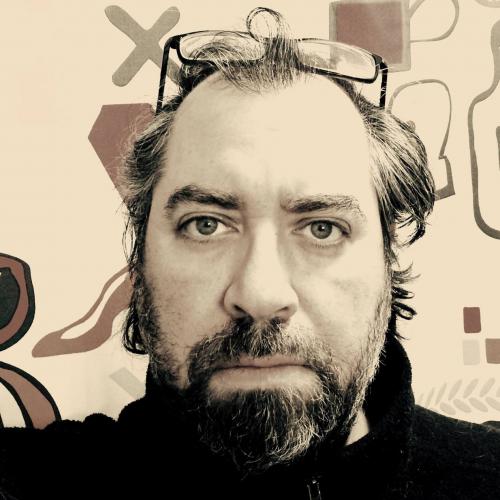Chris Mandra
Chris Mandra is a composer and performer whose work has been performed in Europe, Asia, Canada and the United States. He holds a BM in composition from the University of the Arts in Philadelphia, PA; a certificate of study from the Liszt Ferenc Zeneakademia in Budapest; MM music composition and MM in computer music, both from the Peabody Institute of the Johns Hopkins University where he's also DMA ABD. In 2004 he was awarded a fellowship to STEIM in the Netherlands to work on his wearable performance interface “the manDrum”. he wrote the iOS app "it's gonna be okay!"in response to the global pandemic
Artist Location: Baltimore, MD
Social Media: Artist Website
soundpedro 2021 participation: TBA
Proposed work as accepted for soundpedro 2021:
"it's gonna be okay!" App
I wrote an audio app called "it's gonna be okay!"
"it's gonna be okay!" is the first in a series of bespoke, binaural, aural experiences we call xHeariences from our new experimental audio collective xHearience
"it's gonna be okay!" functions as a timing app that reminds you to exist in the moment rather than wait for it to pass
where most timers make no sound until the time is up, "it's gonna be okay" plays immersive, meditative, and personalized audio which fades out over 20 seconds to remind you of the time limit you set
xHeariences consist of six sound elements, any of which can be set to play for all or part of the xHearience as a percentage of the total amount of time (5 - 100 minutes, in 5 minute increments)
the elements for the "it's gonna be okay!" xHearience are:
- low drone (based on an Indian Shruti box)
- high drone (also based on an Indian Shruti box)
- overtones ("throat"singing)
- voix ("falsetto" singing)
- healing purrs (Molly the cat, the purriest cat we know)
- hope (a calm, reassuring, hopeful voice with the affirmation "it's gonna be okay!", said while petting the aforementioned cat)
all elements in glorious stereo; headphones not required, but preferred
the percentages are back-timed, based on the total time; as each element begins, it joins the existing soundscape of the elements that came before it.

